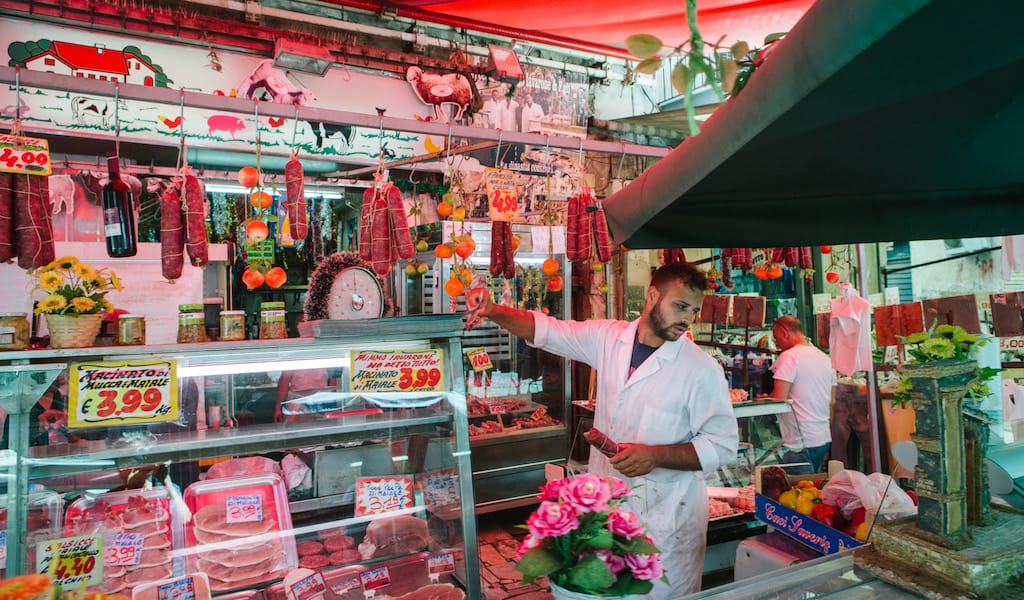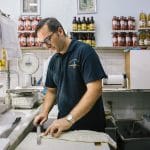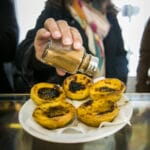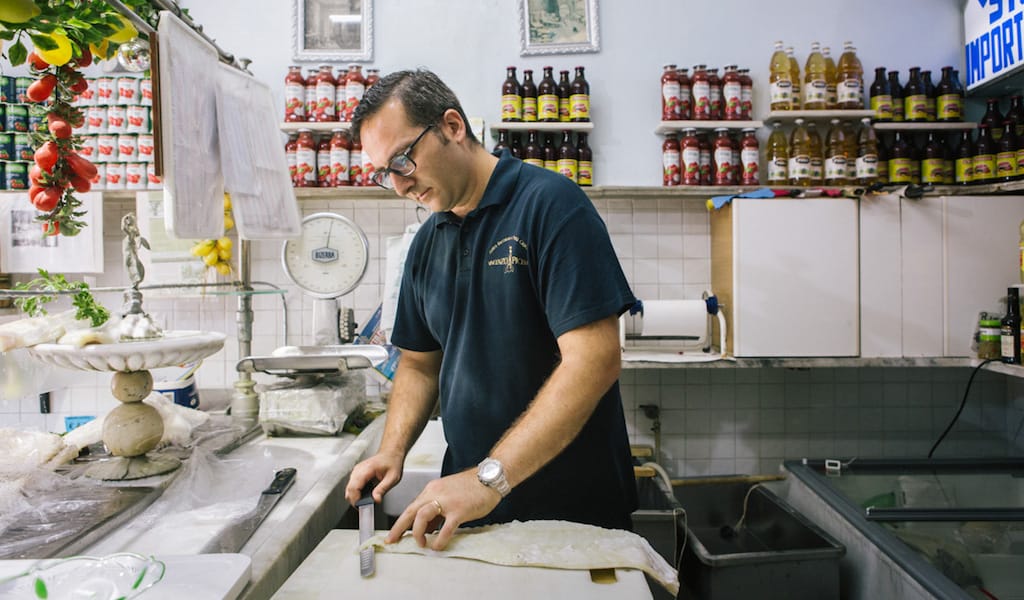Earlier this year we launched our dedicated Naples section, a decision inspired by the city’s divine culinary heritage. Although many Italian cities are celebrated for their cuisine, Naples is one of the few to resist the global invasion of chain supermarkets and restaurants. The city’s cobbled and narrow streets revolve around civic life – the late filmmaker Pasolini accurately described it as “the last great village in Italy.”
We recently asked Gianni Cipriano and Sara Smarrazzo, photographers who regularly shoot for CB, to go along the route of our Naples walk and document what they saw. A Sicilian-born independent photographer, Cirpiano is based between New York and Naples, Italy, and regularly works for The New York Times. Smarrazzo, who was born and raised in Naples, works as a photographer and researches and publishes on urban design. Together, they capture Naples’ old market streets, which manage to be both gritty and picturesque, and the warm community that keeps them humming.
Below is a slideshow of some of our favorite images from their shoot and an interview with Cipriano and Smarrazzo about their impressions of the walk:
From a visual perspective, what stood out most for you during your day out along CB’s Naples culinary walk?
Visually speaking, we were drawn to something indirectly related to the culinary tour: the handmade signs painted by Pasquale ‘o nummararo (Pasquale the Number Man) that can be found at food businesses and fruit and vegetable vendors all over Naples. There are only two or three “number men” left in Naples, which makes Pasquale and his job pretty unique. He inherited his talent from his father, a nummararo himself, and started to paint letters and numbers on wooden boards when he was a child. The art of making colorful handmade price tags for fruit and vegetable vendors was born because the majority of vendors were illiterate and couldn’t write the price tags themselves. Today Pasquale doesn’t have anybody to pass his art on to. Once he retires, this ancient craft will be gone.
As a Naples resident, did you see and learn anything new about the city you live in during this shoot?
Yes. We discovered Antonio Di Paolo’s freselle bakery at Porta Capuana, outside the walls of the historic center. Sara was born and raised in Naples, and I’ve been living here for the past two years, but neither of us knew about this place, which has been in the same spot since the turn of the 20th century. Entering the freselle bakery is like traveling back in time – they’ve been using the same sourdough starter since WW2. It appears not to have changed over the past century (except for the electric pasta maker). It’s incredible when you think that the recipe they use has been around for so long, passed on from one generation to the next.
Our biggest challenge in documenting Naples is to not fall into clichés.
Was there any individual character along the route that particularly caught your attention? If so, why?
We were impressed by Carmine, a man who sells different specialities from his cart depending on the season. He was such a great street entrepreneur. When we met him he was selling lemon granita. But he’ll sell boiled octopus in the fall or roasted chestnuts during the winter. His typical Neapolitan savoir-faire with potential customers will convince anyone to buy his products, whatever they are. What struck us is his ability as a street vendor to sell not only one product, but multiple products, depending on what’s most appealing in a given season. Entertaining the public and customers is an art, and Carmine is a master seller.
In a more general sense, how would you describe the experience of documenting Naples as a photographer?
For both of us, our biggest challenge in documenting Naples is to not fall into clichés. Naples is an extremely photogenic city that offers opportunities for picture-perfect shots juxtaposing beauty and decay. In order to avoid this and to scratch underneath the surface, one must constantly look for those “gates” that open to the realities of the city.
Has your work given you any insight into the state of Naples’ traditional food sellers and its markets? Are they doing well or, like in other places, struggling to survive?
In our opinion, the traditional food sellers whom we’ve met and know are doing pretty well. Naples is definitely the right city to be in the food business: Neapolitans enjoy eating, and visitors come here also for this reason. This is why many businesses that rely on only one recipe have been able to survive for generations.
Published on August 29, 2017
Related stories
Join our Naples walk to try this delicious stockfish sashimi!
May 25, 2018
Naples“Mamma mia!” exclaims our Californian friend, as he tastes a slice of cod carpaccio for the first time. Better yet, let’s call this dish, made by one of the oldest fish shops in Naples, Norwegian stockfish sashimi. We are in Porta Capuana, and Vincenzo Apicella is carefully slicing dried fish (stockfish is an unsalted fish…
April 4, 2024
LisbonQuick Bite: On this food tour in Lisbon, we’ll experience a cultural feast, tasting some of the most diverse bites of the city’s gastronomy and meeting the people behind them. The oldest city in Western Europe, once the hub of a trading empire that connected Macau in the east to Rio de Janeiro in the…
April 1, 2024
NaplesLike the Proustian madeleine, sweets can stir up all kinds of feelings in the minds of those who eat them. In Naples, struffoli (small, round doughnuts glazed with honey) and cassata (sponge cake with ricotta and candied fruit) speak of Christmas, while chiacchiere (sugar-dusted fritters) and sanguinaccio (literally “blood pudding,” but actually made of chocolate)…
















































































